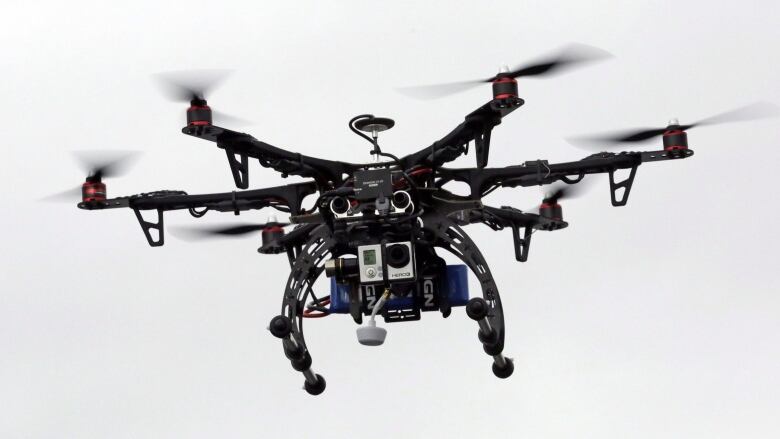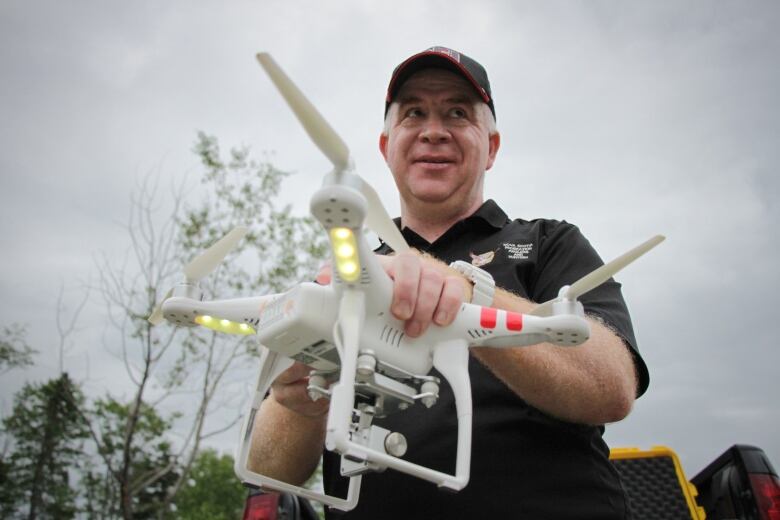Transport Canada quietly loosens rules on flying small drones
Halifax-based company caught off guard by move

Recreational drone users may be surprised to learn that they now have a bit more flexibility on where they can fly their equipment.
"There was no announcement on these changes. It just happened," said MarkLangille,a partner withflitelab, a Halifax-based company that uses drones for TV production and commercial aerial photography and video.
"People reading the regulations started spotting, 'Hey,these are not the same ones that were in effect a week ago.'"
In March, the federal government announced rules for drones weighing more than 250 grams.
But a few weeks ago, Transport Canada quietly loosened the rules for users of small drones, allowing them to fly them closer to vehicles, vessels, people and airports than previously permitted.
Distance changes
If a drone weighs between 250 grams and 1 kilogram, it must now be flown30 metres away from vehicles, vessels and the public. Previous rules stated that drones must be 75 metres away from vehicles, vessels, people, animals and buildings. Drones that weighmore than 1 kilogram must still stay 75 metres away from vehicles, vessels and people.
Recreational drones now cannot fly within 5.5 kilometres of airports, seaplane bases or places where aircraft take off or land, or within 1.8kilometres of a heliport. Previously, drones had to stay nine kilometres away.
Some rules remain unchanged
Other rules have not changed. Recreational drones must fly within 90 metres of the ground.Drones still must stay away from areas where they can interfere with police or firstresponders, andnine kilometres away from natural hazards or disasters.
Drones must be used only during the day and not in clouds. Theymust remainwithin sightand within 500 metres of the operator. Drones must also be clearly marked with the operator's name, address and phone number.
A subtle but major change
But the rules will make a big difference to some Canadians, Langille says.
"It was a subtle change but it made a major change in the way that you could use it."

In places like Toronto, where there are a lot of helipads, or on the West coast, where there are a lot of seaplane ports, the reduction in the no-fly zone will open new areas to recreational drone users.
Haligonians, though, are not so lucky. Most of the peninsula is in controlled airspace due to the presence of 12 Wing Shearwater across the harbour.
"Pretty much all of the peninsula is pretty much off limits as it was before," Langille said.
Langillesaid Transport Canada has received alot of pressure from drone users and manufacturers who felt the earlier rules were too restrictive.
"I think they're listening toa degree and they started to scale it back," he said."What's there now is a bit more reasonable than what it had beenbefore.Before, unless you were out in the country in the middle of a fairly large field by yourself, you're going to be close to something."
Concerns for commercial users
Mark VoutierownsIsland Aerial Media in Sydney, N.S. He said the changes won't affect his business because he uses commercial drones rather than recreational ones.
"To me, itdoesn't excite me at all. I'm noteven reallyhappy about it. Itdoesn't pertain to me," he said.
But what worries him are new proposed rules governing which commercial drones can be flown. He says those rules classify his current drones as non-compliant. And to become compliant, he'd have to buy a much more expensive drone.
"The cheapest one is $30,000 and the average one is up over $100,000. So it's going to put a lot of people out of business," Voutier said.
Langilleagreed that those proposed rules are a concern, even though they still need to be approved, which won't likely happen until next year.
"The systems we're flying now may no longer be legal to be used," hesaid."It's still a big unknown."












_(720p).jpg)


 OFFICIAL HD MUSIC VIDEO.jpg)
.jpg)



























































































